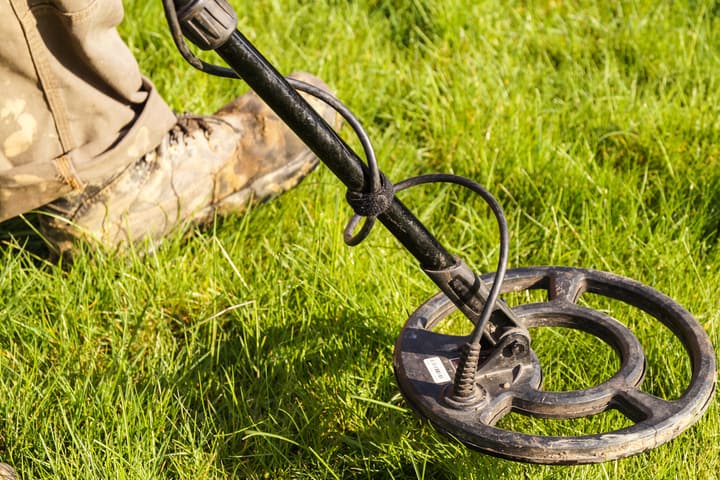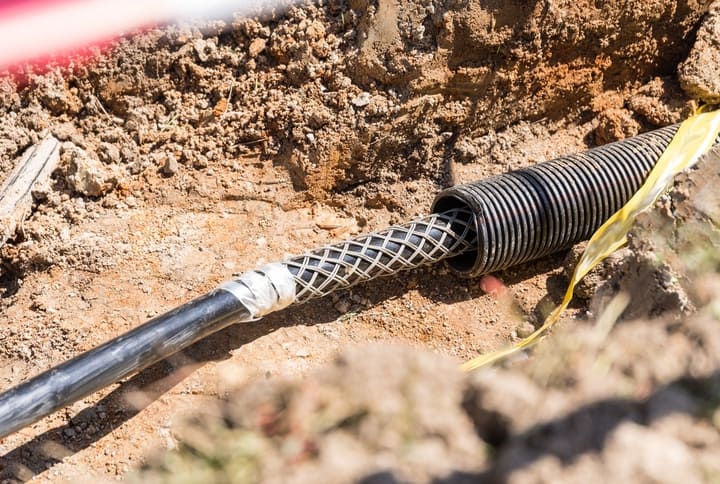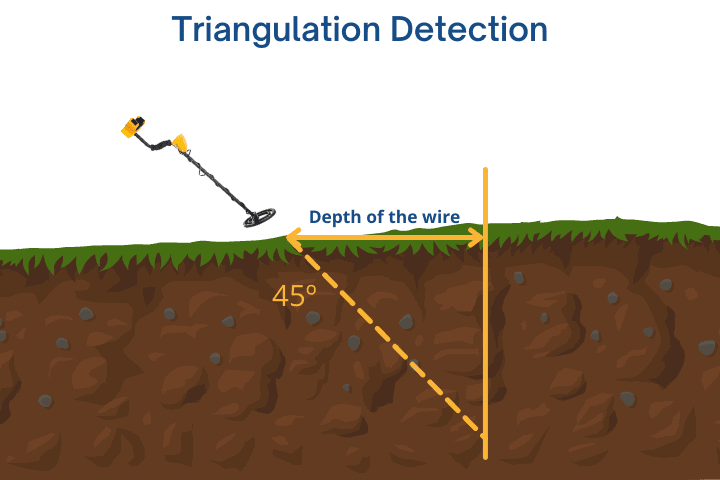Say you’ve moved into a home that has existing landscape lighting, or you installed your own long ago. But, unfortunately, you’ve since forgotten everything about it.
One day there will come a time when you need to find out where the buried wire is, and you might not have a clue.
It could be that you’re about to renovate your garden or add a new landscape feature, and you want to avoid damaging the wire, or there may be a fault with the circuit that you need to investigate.
Where do you start?
The easiest way to find buried wire is with a proper wire detector. They range in cost from around $50 to a few hundred, but the lower-priced ones are usually fine for non-professional use. The most common alternative is to disconnect the power and carefully dig in likely spots using a hand shovel, but this is best avoided if you can.
In this article I’ll take you through:
- Three methods to find buried wire
- Three ways to estimate the depth of that wire
How To Find Buried Landscape Lighting Wire?
Really, there aren’t too many options available for finding buried wire.
Use Hand Shovel

The trial and error approach is that you don’t know how well protected any wiring is.
Start diving in with a full shovel, and you’re likely to cut through the wire – not only will this destroy the circuit, but if you’ve also left the power on, then you could be in serious danger.
However, sometimes you might think this is just the best way to go.
If you do, make sure you turn the power off before you do anything, and then use a hand shovel to gently dig without plunging it deep into the ground.
If you’re lucky, the person who installed the cable will have been sensible and used warning tape, buried underneath the surface but a few inches above the wire.
This will make your job much easier.
Dig at a 45 degree angle, not straight down – if you do make contact with the wire you’re less likely to shear it in half this way.
Use a Metal Detector

Yes, a metal detector will work if you have one in your home already, as long as it’s good enough quality, has the suitable range to reach the wire, and it’s not too insulated.
Be aware, though, that most metal detectors have a large head – they’re not designed for precise thin wires such as landscaping cables. As a result, you might only be able to narrow things down.
Also, a metal detector isn’t the best tool available, so only go for this if you or a friend or relative already owns one.
Don’t think about buying a metal detector for this purpose – you’d be better buying an actual wire locator.
Also read: How To Waterproof Landscape Lighting Connectors
Underground Wire Locator
The best option by far is an underground wire locator.
These are dedicated tools that are designed explicitly for the job of detecting wire underground.
They come in two parts – a transmitter and a receiver.
The transmitter needs to be connected to the wire you want to trace and uses simple clips, so you don’t need to disconnect it from the circuit as long as you’ve cut the power.
Never try to trace a wire with a connected power supply; it’s dangerous!
Once the transmitter is in place, you carry the receiver with you and scan the ground.
It will come with a receiver that can just be a dangling bead or a wand.
The receiver will also have the option to plug in headphones, though more upmarket models will have speakers.
With everything connected, you’ll get an audible alarm when the receiver is pointed at the wire.
This will enable you to trace where you think it is and find it. It’s a good idea to carry around some form of marker, so you can plot out the lines of the cable exactly where it is.
When choosing a wire detector, look for one that works to the required depth you need.
Most low-voltage wires are buried between 6 and 12 inches deep, but someone extra careful may have gone deeper.
Then you can consider any extra features – some may include a flashlight for low-light detection, and some may include headphones for you to use.
The most premium features for wire detectors include depth estimation and GPS plotting, which will record the positional data of the wire.
These are only available on the most high-tech detectors designed for professionals – expect to pay around $1000 or more.
Here’s a well-reviewed and reasonably priced wire detector (Amazon) that works up to 3 feet down.
Related: How To Protect Landscape Lighting Wire?
How To Determine Depth Of Buried Wire?

There are three ways to work out the estimated depth of a buried wire.
The first is to pay a considerable sum for a wire detector with depth estimation as a feature.
These will cost a few hundred dollars, so hardly the most cost-effective solution for your own home landscape lighting updates.
The second is, once you’ve identified where the wire is, dig a spot close to it, so you can find the actual wire, and then measure the depth by hand.
There are many reasons this isn’t ideal either, since you need to spend time and effort digging up part of your garden.
Therefore, the third method is the most sense when you’re not a professional. Use your wire detector as normal to locate the wire and mark where it is.
It needs to be vertical at all times.

Once you’ve established where the wire runs, hold the detector as close to a 45-degree angle as possible and move away from the wire in a perpendicular direction.
Wait until it detects the wire again, and measure the distance from the wire to where you are now.
Because you’ve been holding the detector at 45 degrees, you’ve then used triangulation to determine that the distance you are from the wire is the same as the estimated depth.
The angle is crucial because that’s what makes it an equilateral triangle, where the depth is equal to the distance you’ve measured.
Simple math and science.
Also read: Can You Bury A Landscape Lighting Wire?
Final Words
Trying to find underground wire without tearing up your entire garden isn’t always easy. Still, the most important thing to do is to be safe.
Don’t go wildly digging with the power left on, as that will only cause extreme hazards.
It’s definitely best to use a wire detector since you’ll get an accurate result without any manual work, and you can get at least an estimate of the depth too.
Any other ideas for finding a buried cable or estimating the depth?


